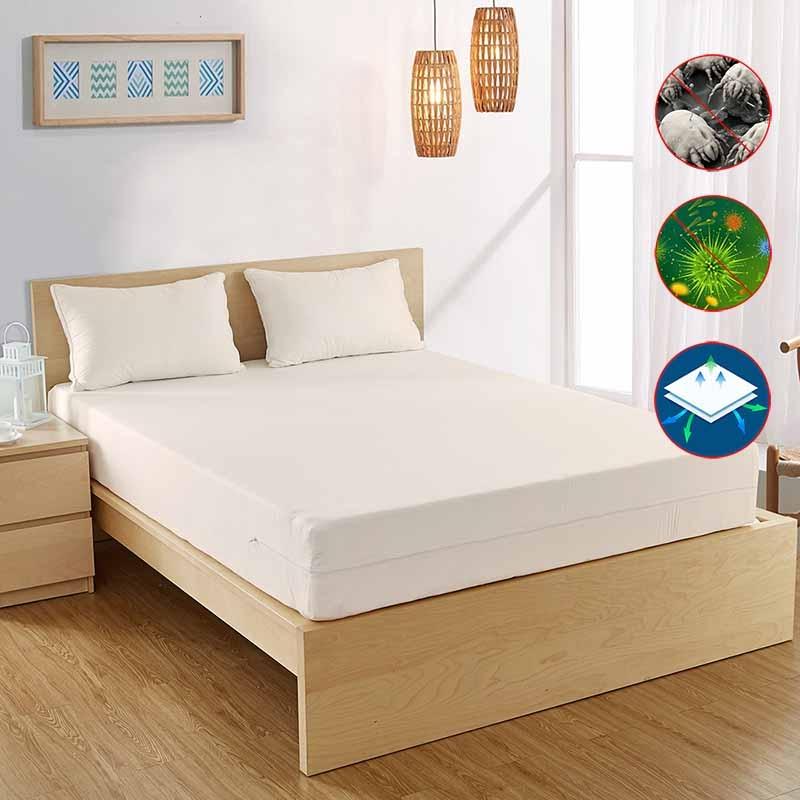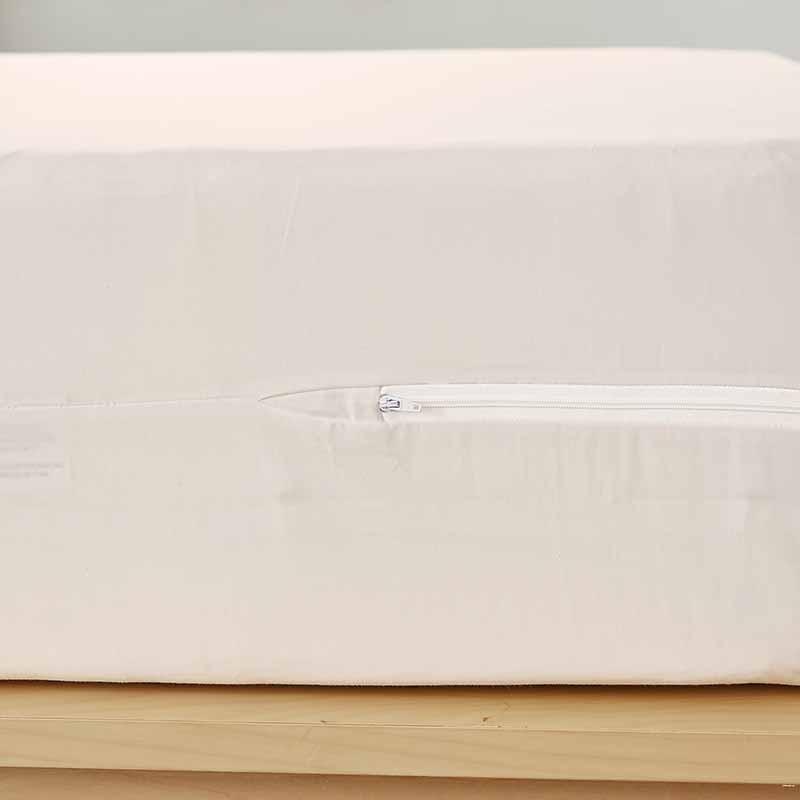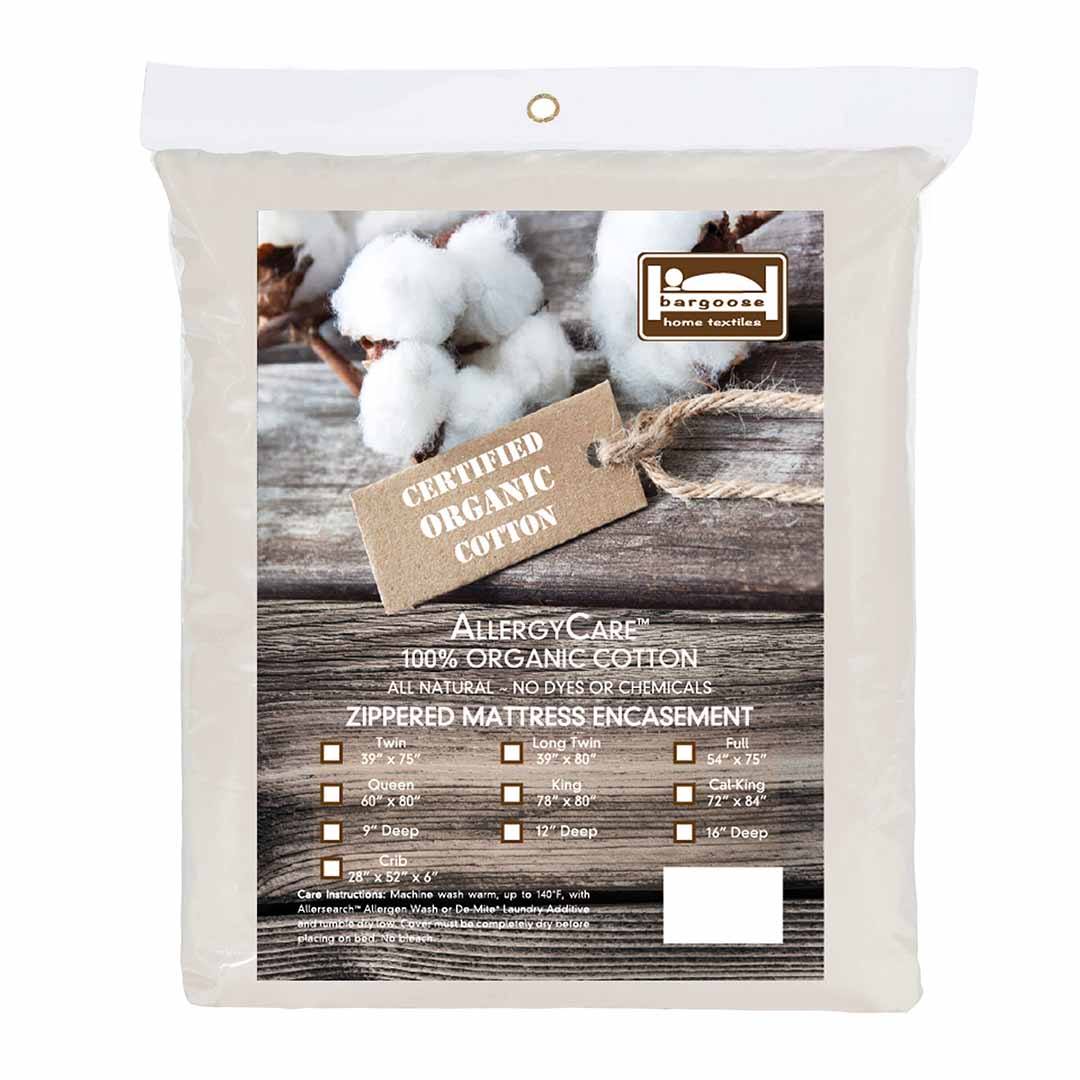Sleep Easy with the Mattress Cover Allergy Sufferers Trust
If you or your child struggles with allergies, nighttime can feel like a battleground. The AllergyCare™ Organic Cotton Mattress Encasement is designed for families like yours—those managing chronic symptoms, who’ve been let down by so-called “hypoallergenic” products in the past. Made from soft, certified organic cotton, this encasement provides a proven barrier against dust mites, pet dander, and other allergens—without the use of chemicals, coatings, or noisy plastics.
Developed and tested by a women-owned, family-run company of lifelong allergy sufferers, our protective bedding is doctor-recommended, safe for sensitive skin, and trusted by thousands of parents who want the best for their families.
Note: AllergyCare Organic Cotton Mattress Protectors are not waterproof.
Why AllergyCare™ Is Different
-
✅ Certified Organic Cotton: No chemicals, no coatings—just tightly woven, breathable cotton that blocks allergens while staying soft and quiet.
-
✅Tightly woven to 5.9 microns: Laboratory tested to ensure the weave does not separate. See test results
-
✅ Complete 6-Sided Protection: The zippered closure completely seals your mattress from top to bottom—ideal for managing asthma, eczema, and allergies.
-
✅ No Crinkly Plastics: Soft, noiseless comfort that won’t wake light sleepers.
-
✅ Trusted by Doctors, Loved by Families: Designed by people who actually live with allergies—not a generic brand from a big-box store.
-
✅ Easy to Use & Wash: Machine washable and dryer safe for practical, long-term use.
Who It's For
-
Parents managing a child’s asthma or allergies
-
Adults struggling with nighttime symptoms or skin irritation
-
Eco-conscious buyers seeking chemical-free, certified bedding
-
Health professionals or caregivers need proven protection in sensitive environments
Real Stories from Real Customers
“I’ve tried mattress covers from Amazon before, but none felt this soft and safe. My son hasn’t had a nighttime cough in weeks. Worth every penny.”
— Emily G., FL
“This is the only encasement that didn’t irritate my skin. I finally sleep through the night.”
— Michael T., NY
A Risk-Free Step Toward Better Sleep
We know trust takes time, especially if you’ve been burned by ineffective “hypoallergenic” bedding. That’s why we offer:
-
💬 Expert Support: Call or chat with our team—many of us are allergy sufferers, too.
-
🔄 Satisfaction Guarantee: Don’t love it? We’ll make it right.
-
🚚 Fast U.S. Shipping: Orders ship within 1 business day.
Start with the Bedroom
The bedroom is the #1 place allergens hide—and your mattress is the largest surface. Combine this encasement with our pillow covers and air purifiers for the most noticeable relief, fast.
Breathe better. Sleep deeper. Feel safer—with AllergyCare™.
Q: What makes this mattress encasement different from others on Amazon or big-box stores?
A: Unlike generic protectors, our AllergyCare™ Organic Cotton Encasement is GOTS-certified, made in the USA, and developed by a family-owned company that understands allergies firsthand. It’s doctor-recommended, free from harsh chemicals, and crafted for true allergy relief—without noisy plastic or false hypoallergenic claims. Each product is hand-selected for effectiveness and backed by 30+ years of industry expertise.
Q: Is this mattress cover noisy or crinkly like vinyl or plastic?
A: Not at all. This encasement is made from soft, breathable, tightly woven organic cotton. There are no vinyl layers, plastic coatings, or synthetic barriers. That means a quiet, comfortable night's sleep—even for light sleepers or children who are sensitive to sound or texture.
Q: Can this help reduce nighttime allergy and asthma symptoms?
A: Yes—especially when combined with allergen-proof pillow encasements and air purifiers. By fully sealing your mattress, this cover prevents exposure to dust mites, pet dander, and pollen trapped inside bedding, which are major triggers for asthma, allergic rhinitis, and eczema. Many customers report fewer symptoms, better sleep, and improved breathing within the first week.
Q: Is this mattress encasement safe for babies and toddlers?
A: Absolutely. Our encasement is made from untreated, chemical-free organic cotton, making it ideal for infants, toddlers, and children with eczema, asthma, or allergies. It’s free from VOCs, flame retardants, and synthetic coatings. Pair with our crib-safe covers for full nursery protection.
Q: What size mattress does this cover fit, and does it stretch?
A: Each encasement is designed for a snug, secure fit based on mattress depth (e.g., 9", 12", 15"). The cotton fabric itself does not stretch, which is intentional—it ensures a tight seal that allergens can’t penetrate. Please check the size guide before purchasing, or reach out to our allergy-trained support team for help choosing the best fit.
Additional information
- Looking for complete protection? Check out our matching organic cotton pillow covers and comforter covers for full dust mite relief.
- Learn how to choose the best mattress protector with our guide: [How to Measure for a Mattress Cover].
Blog Post - What does pore size mean in allergy bedding?






